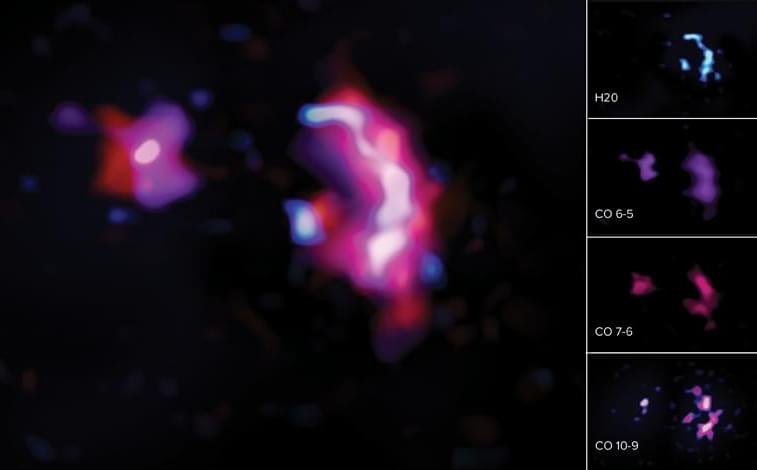Water has been detected in the most massive galaxy in the early Universe, along with its neighbouring companion, according to new observations from the Atacama Large Millimeter/submillimeter Array (ALMA). In addition to H2O, astronomers found carbon monoxide (CO) in the galaxy pair, which are designated as SPT0311-58 and located 12.88 billion light years from Earth.
Detection of these two molecules in abundance suggests that the molecular Universe was already going strong, only a relatively short time after the forging of elements in early generations of stars. The new research is the most detailed study of molecular gas content of a galaxy in the early Universe to date and the most distant detection of H20 in a regular star-forming galaxy. The research is published this week in The Astrophysical Journal.
Astronomers discovered the two galaxies in 2017. The pair’s location, or time, places them within the Epoch of Reionization. This epoch, as highlighted in the diagram below, occurred when the Universe was only 5% of its current age – and the first stars and galaxies were being born. Scientists believe that the two galaxies may be merging, and that their rapid star formation is not only using up their gas, but may eventually evolve the pair into massive, elliptical galaxies like those seen in the Local Universe.
